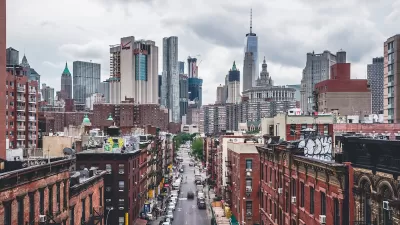The mostly unfamiliar cities of China's vast inland territories are growing at an exponential rate, attracting global businesses, infrastructure investment, and residents in search of opportunities.
It has a population larger than that of New York City, and its GDP is expected to double in five years. With business booming, China's city of Wuhan, located about 750 miles deep into China's hinterland, is seeing explosive growth, putting a strain on its infrastructure and environment. NPR's Frank Langfitt reports, "A variety of factors are driving that growth, everything from cheap land prices and low-cost labor to the tremendous demand for infrastructure...These days, the city feels like an open construction site as the local government tries to put in its first three subway lines. Many citizens can't wait."
Wuhan's evolution into a metropolis is similar to that of many other inland Chinese cities. Seen as a place for business to escape the increasingly expensive east coast cities, like Shanghai, Beijing, and Hong Kong, inland cities are attracting both rural Chinese, who continue to flock to cities, and, increasingly, foreigners. Lower costs for business are giving incentives to foreign firms to move to inland China. "U.S. companies in Wuhan include the giant engine manufacturer Cummins, General Electric and TRW Automotive. According to Corum, they will soon be joined by General Motors," says Langfitt. "The French automaker Peugeot-Citroen has two factories in Wuhan. Pfizer has a research and development facility here as well."
Still, the rapid development hasn't been without problems. With a single light rail line, Wuhan's traffic is horrendous. Also, "[e]arlier this summer, a yellow, post-apocalyptic smog enveloped the city," reports Langfitt, "sparking fears that there had been an industrial accident." And for some residents, says Langfitt, Wuhan still cannot match the high life in the more cosmopolitan and developed east coast.
FULL STORY: Wu-Where? Opportunity Now In China's Inland Cities

Alabama: Trump Terminates Settlements for Black Communities Harmed By Raw Sewage
Trump deemed the landmark civil rights agreement “illegal DEI and environmental justice policy.”

Planetizen Federal Action Tracker
A weekly monitor of how Trump’s orders and actions are impacting planners and planning in America.

The 120 Year Old Tiny Home Villages That Sheltered San Francisco’s Earthquake Refugees
More than a century ago, San Francisco mobilized to house thousands of residents displaced by the 1906 earthquake. Could their strategy offer a model for the present?

Ken Jennings Launches Transit Web Series
The Jeopardy champ wants you to ride public transit.

BLM To Rescind Public Lands Rule
The change will downgrade conservation, once again putting federal land at risk for mining and other extractive uses.

Indy Neighborhood Group Builds Temporary Multi-Use Path
Community members, aided in part by funding from the city, repurposed a vehicle lane to create a protected bike and pedestrian path for the summer season.
Urban Design for Planners 1: Software Tools
This six-course series explores essential urban design concepts using open source software and equips planners with the tools they need to participate fully in the urban design process.
Planning for Universal Design
Learn the tools for implementing Universal Design in planning regulations.
Clanton & Associates, Inc.
Jessamine County Fiscal Court
Institute for Housing and Urban Development Studies (IHS)
City of Grandview
Harvard GSD Executive Education
Toledo-Lucas County Plan Commissions
Salt Lake City
NYU Wagner Graduate School of Public Service





























